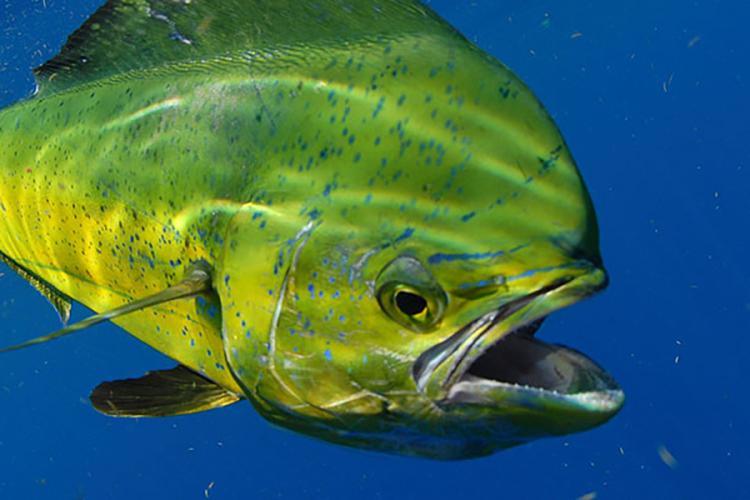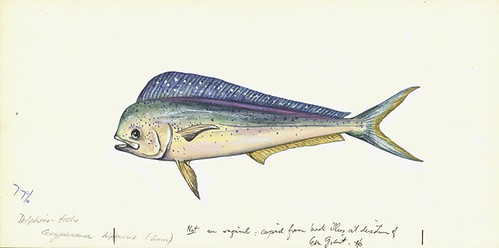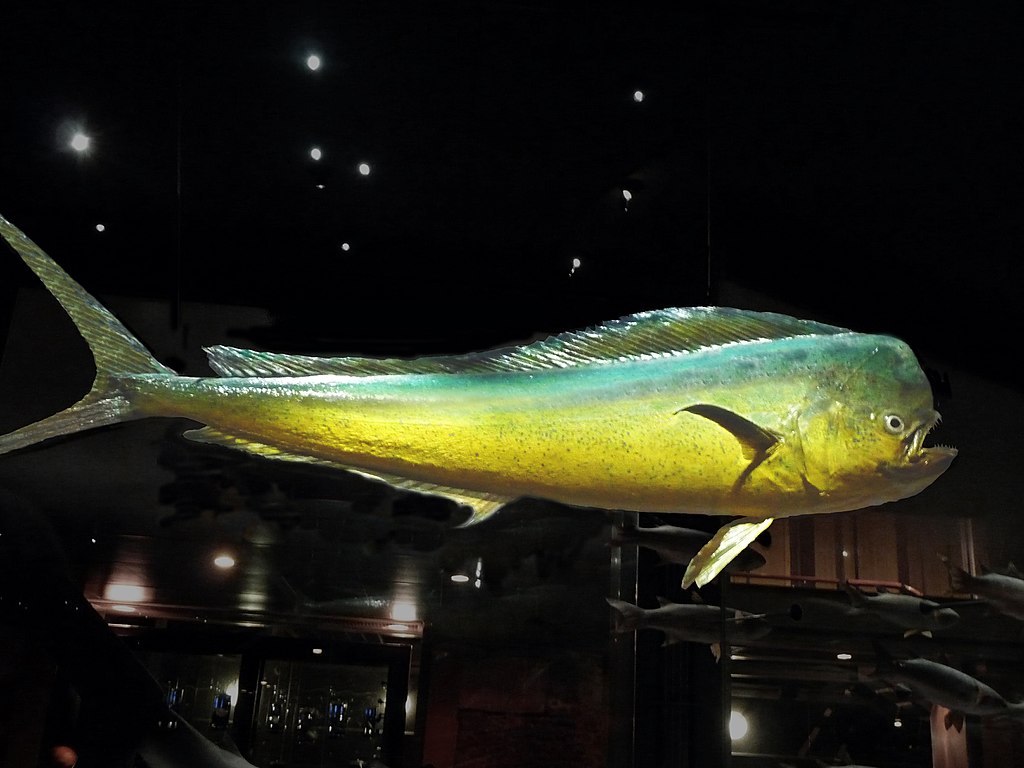What is a Dolphinfish?
These FIN-credible facts prove just how marvelous mahi mahi are

Chances are that most ocean lovers are familiar with the iconic marine mammal, the dolphin. But have you ever heard of the spectacular ocean resident known as the dolphinfish? Despite its shared name, it’s unrelated to the more well-known marine mammal. The dolphinfish is a jaw-droppingly beautiful pelagic (open ocean) fish species that also carries two other nicknames: dorado and mahi mahi (the latter translating to “strong strong” in Hawaiian).
These fish can be found in tropical and subtropical waters all over the world, spending most of their time in the open ocean at depths of between zero and 279 feet below the surface. Though they typically prefer open waters, they are occasionally spotted closer to shore, most often hanging out near floating collections of an algae called sargassum or following large ships in as they travel closer to the coast.
It’s important to note that there are two species in the dolphinfish family (Coryphaenidae): the common dolphinfish (Coryphaena hippurus) and the pompano (Coryphaena equiselis). They are very similar in appearance with long, streamlined frames, dorsal fins running nearly the entire length of their bodies and forked tail fins. They usually measure around three feet long and weigh close to 30 pounds but have been observed at records of more than six feet long and more than 80 pounds in weight!
Incredibly vibrant in color, most of these fish have stunning greenish-gold bodies with patches of blue and bright green that shimmer beautifully when they reflect sunlight. They also have blunt heads (especially males) that contain numerous tiny teeth as well as what’s known as a “tooth patch” on their tongues.
If you’re trying to distinguish the common dolphinfish from the pompano, there are a few ways to tell them apart, but the easiest is typically to take a look at the depth of their bodies, specifically examining the distance from the top (dorsal) side of the fish to the bottom (ventral) side. While the common dolphinfish typically has a measured body depth of less than 25%, the pompano is known to have body depths surpassing 25%. There is also a way to tell a younger dolphinfish from an older one; juveniles often have vertical bar-type markings, which fade over time as the fish mature. These markings are found on the sides of their bodies that stretch onto their fins.

Speaking of maturity, these fish grow extremely quickly! With an average lifespan of around four years, dolphinfish typically reach reproductive maturity by the time they are four to five months old. During spawning season (which occurs intermittently throughout the year in tropical waters), the fish will spawn every two to three days, with females releasing approximately 33,000 to 66,000 eggs each time they spawn. That’s a lot of mini-mahis!
Oh, and I’d be remiss not to mention that these animals are serious ocean athletes. Dolphinfish are impeccably agile swimmers, reaching potential speeds of up to 57 miles per hour. Thanks to their natural agility and aptly compressed bodies, mahi mahi rank among our ocean’s top predatory fish. They are diurnal hunters, meaning they’re mainly active during the day, and love to chase down their favorite pelagic snacks, including but not limited to triggerfish, flying fishand man-o-war, as well as larger juvenile fishes like tuna and billfishes such as sailfish and swordfish. It’s interesting they’re known sometimes to hunt in pairs, using teamwork to lock down their meals. Since males tend to be larger than females at around the same age, they do tend to eat more food in general than female dolphinfish, likely in an effort to support their speedy metabolism.
In mentioning the hunting patterns of dolphinfish, it’s also important to acknowledge the predators of dolphinfish themselves. Most often, large marine mammals and adult billfish are the animals mahi mahi must keep an eye out for. However, humans should be counted among these predators, too: These colorful creatures are also highly sought after as gamefish and are fished both recreationally and commercially.

Because dolphinfish reach maturity at a young age and produce a large number of offspring (remember the tens of thousands of mini-mahis being spawned every few days?), many studies suggest that mahi populations are able to handle relatively high catch levels compared to other species, specifically when it comes to the South Atlantic and Gulf of Mexico fisheries. However, as with many ocean-going species, more research would help to understand the full impact of fishing and the status of the dolphinfish populations.
All in all, it’s safe to say that the dolphinfish is a captivatingly unique marine specimen. If you’re interested in learning more about the conservation work that’s being done to protect fish species like this one, be sure to visit our Sustainable Fisheries page to learn all about the fish conservation work we’re doing here at Ocean Conservancy—and , of course, how you can help!